High fever causes in toddlers. High Fever in Toddlers: Causes, Treatments, and When to Seek Medical Help
What causes high fever in toddlers. How to treat fever in children at home. When does a child’s fever require medical attention. What are the signs of serious illness accompanying fever in kids. How to measure a child’s temperature accurately. What are the potential complications of untreated high fever in toddlers. How to prevent fever-related febrile seizures in children.
Understanding Fever in Children: Causes and Mechanisms
Fever is a common occurrence in children, often causing concern among parents and caregivers. But what exactly is fever, and why does it happen? A fever is defined as a body temperature above 38°C (100.4°F). It’s important to note that normal body temperature can vary slightly throughout the day, but anything above this threshold is considered a fever.
The body’s temperature regulation is controlled by the hypothalamus, a region in the brain that acts like a thermostat. When the immune system detects an infection, it signals the hypothalamus to raise the body’s temperature. This increase in temperature is believed to help fight off infectious agents like bacteria and viruses, which tend to multiply best at normal body temperature.
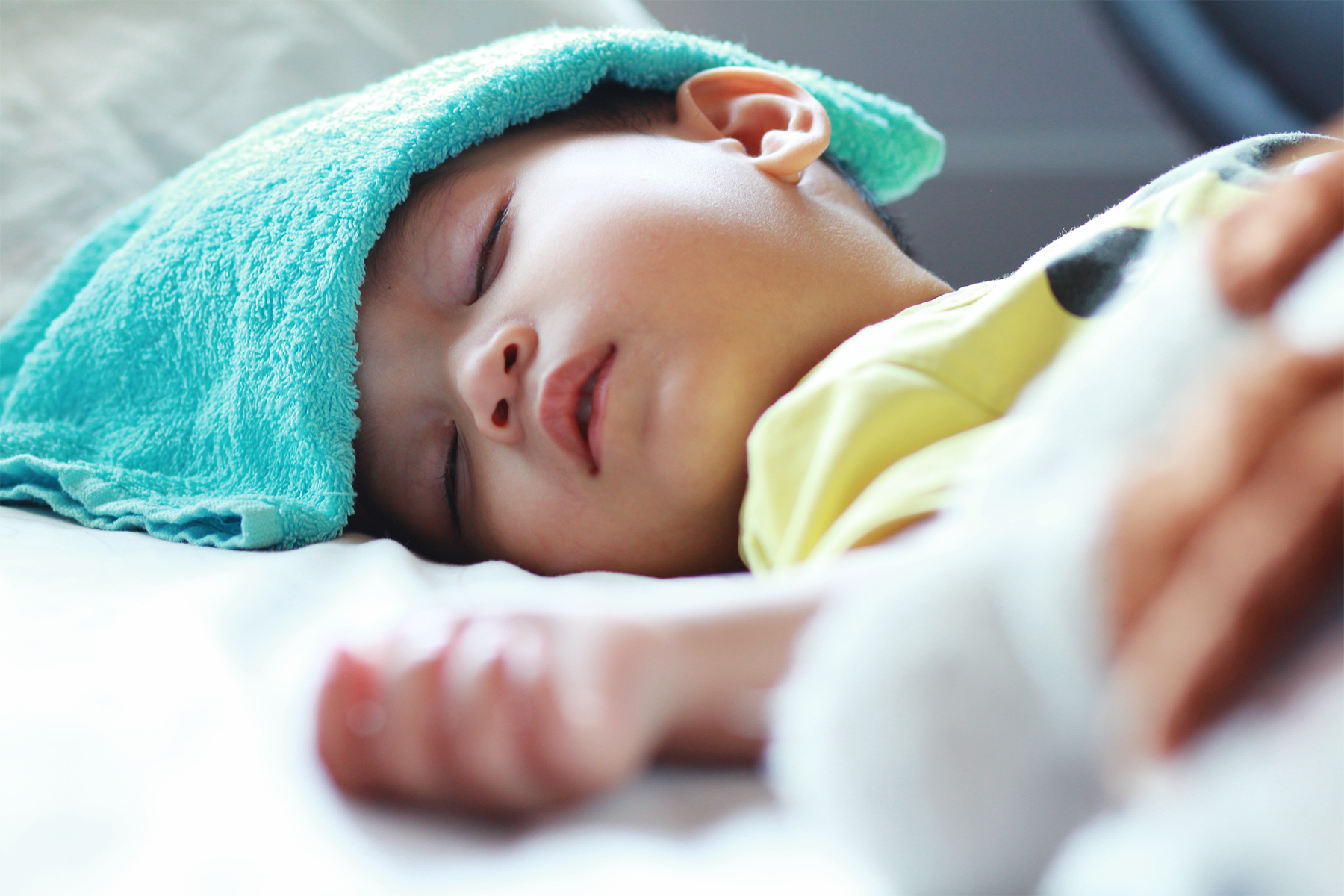
How Does the Body Create a Fever?
The process of developing a fever involves several physiological changes:
- Reduced sweating
- Shivering to generate heat
- Constriction of blood vessels in the skin to preserve heat
- Seeking warmth and curling up
These changes explain why a child with a rising fever may feel cold despite being hot to the touch. Once the body reaches the new “thermostat” setting, the feeling of being cold subsides. Eventually, when the fever breaks, the body tries to lose the excess heat through sweating and dilation of blood vessels in the skin.
Common Causes of High Fever in Toddlers
While fever can be alarming, it’s essential to understand that it’s often a sign that the body is fighting an infection. In most cases, fever in young children over 6 months of age is not serious. However, it’s crucial to be aware of the potential causes:
Viral Infections
Viral infections are the most common cause of fever in children. These can include:
- Common cold
- Flu
- Respiratory syncytial virus (RSV)
- Gastroenteritis (stomach flu)
- Hand, foot, and mouth disease
Bacterial Infections
While less common than viral infections, bacterial infections can cause more severe illnesses and higher fevers. Examples include:

- Ear infections
- Strep throat
- Urinary tract infections
- Pneumonia
- Meningitis (in rare cases)
Other Causes
In some cases, fever may be caused by factors other than infections:
- Immunizations: It’s normal for children to develop a low-grade fever after receiving certain vaccines
- Teething: Can cause a slight increase in body temperature (usually not exceeding 38°C)
- Inflammatory conditions: Such as Kawasaki disease or juvenile rheumatoid arthritis
- Overheating: Due to excessive clothing or hot weather
When to Worry: Red Flags for High Fever in Children
While most fevers in children are not cause for immediate concern, there are certain situations where medical attention should be sought promptly. Understanding these red flags can help parents make informed decisions about their child’s health.
Age-Based Guidelines
The age of your child plays a crucial role in determining when to seek medical help for a fever:
- 0-3 months: Any fever of 38°C (100.4°F) or higher requires immediate medical attention
- 3-6 months: Seek medical advice if the temperature is 39°C (102.2°F) or higher
- 6 months and older: Most fevers can be managed at home, but consult a doctor if the fever persists for more than 3 days or is accompanied by other concerning symptoms
Accompanying Symptoms
Certain symptoms accompanying a fever may indicate a more serious condition:

- Severe headache or neck stiffness
- Persistent vomiting or diarrhea
- Difficulty breathing or rapid breathing
- Severe abdominal pain
- Unusual drowsiness or difficulty waking
- Seizures or convulsions
- Unusual rashes, especially those that don’t blanch when pressed
If your child exhibits any of these symptoms along with a fever, it’s important to seek medical attention promptly.
Treating Fever in Children: Home Remedies and Medical Interventions
Managing a child’s fever often starts at home. Here are some effective strategies to help your child feel more comfortable and reduce their temperature:
Home Remedies
- Keep them hydrated: Offer plenty of fluids to prevent dehydration
- Dress lightly: Remove excess clothing or blankets to help the body release heat
- Create a comfortable environment: Keep the room temperature cool but not cold
- Use lukewarm compresses: Apply to the forehead, wrists, and calves
- Rest: Encourage your child to get plenty of sleep
Medication
Over-the-counter fever reducers can be used when necessary:
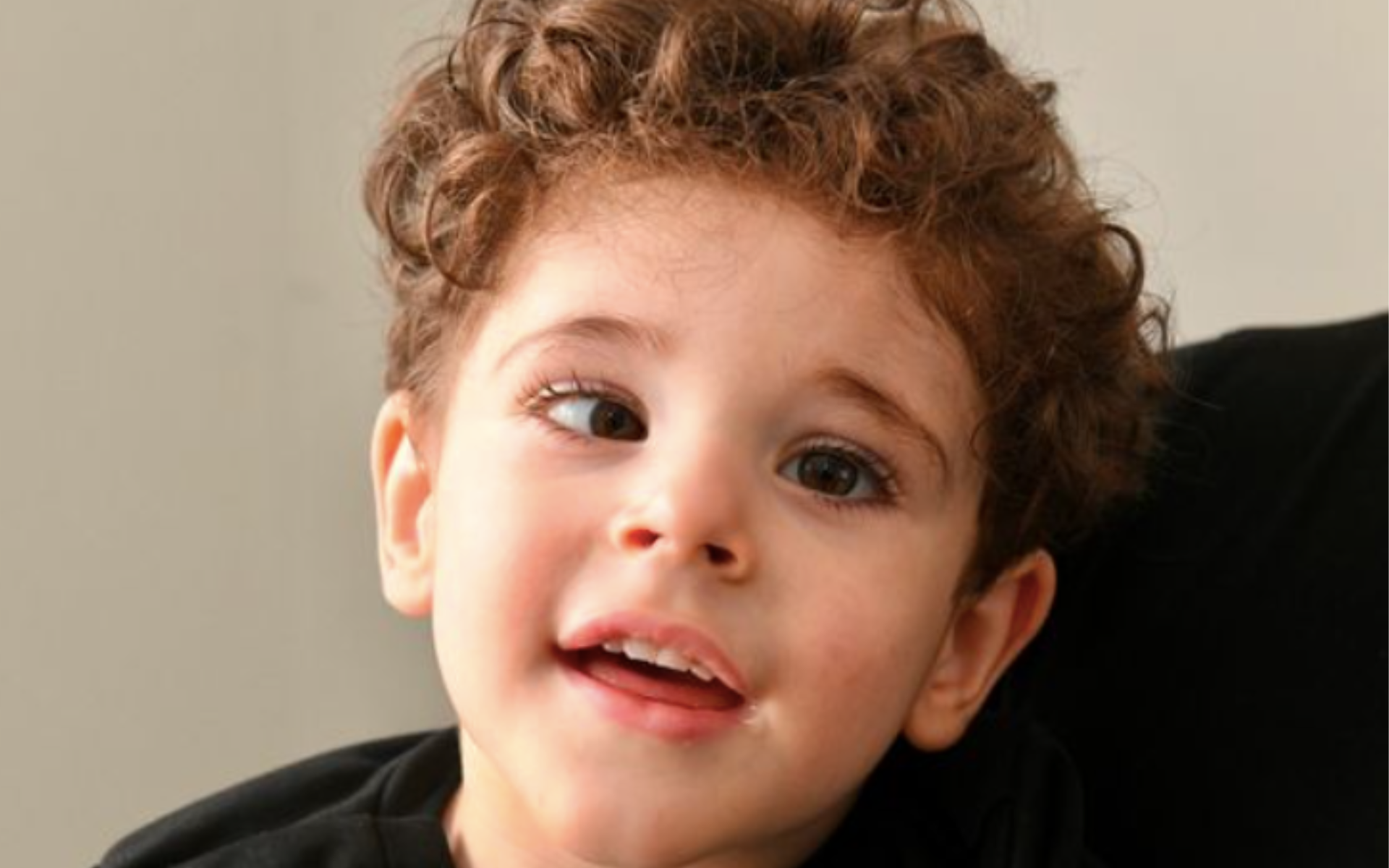
- Acetaminophen (Tylenol): Safe for children of all ages
- Ibuprofen (Advil, Motrin): For children 6 months and older
Always follow the dosage instructions based on your child’s weight and age. Avoid aspirin for children due to the risk of Reye’s syndrome.
Can fever be dangerous for children?
While fever itself is rarely dangerous, it can be uncomfortable for children. In some cases, very high fevers (above 41°C or 106°F) can lead to complications such as dehydration or febrile seizures. However, it’s important to note that the height of the fever doesn’t necessarily correlate with the severity of the illness. A child with a relatively low fever might be more ill than one with a higher temperature.
Preventing Fever-Related Complications in Toddlers
While fever is a natural response to infection, there are steps parents can take to prevent complications and ensure their child’s comfort:
Febrile Seizures
Febrile seizures are convulsions that can occur in young children with high fevers. While they’re generally harmless, they can be frightening for parents. To reduce the risk:
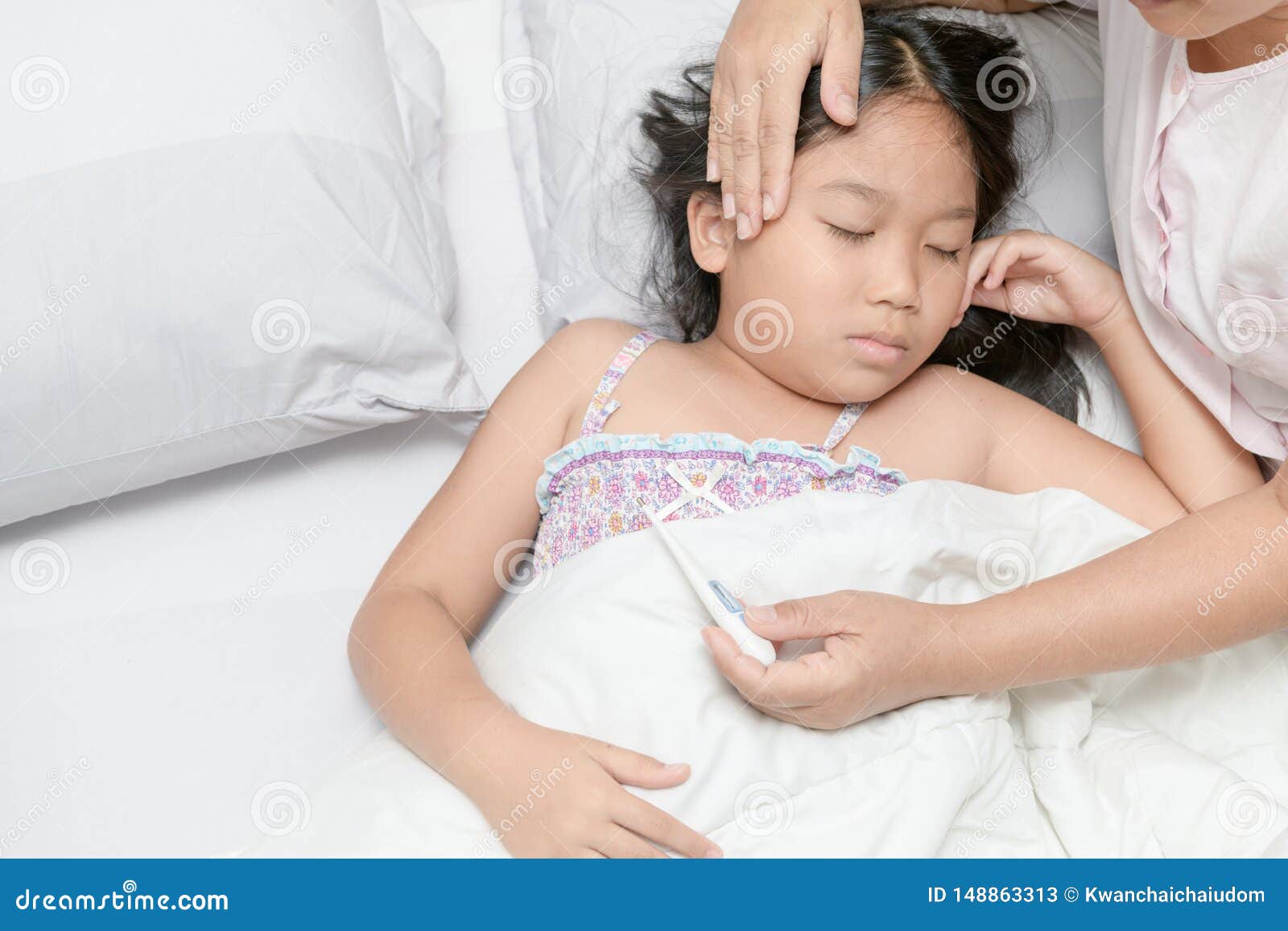
- Monitor your child’s temperature regularly
- Use fever-reducing medications as directed
- Keep the child cool and comfortable
- Ensure proper hydration
Dehydration
Fever can lead to increased fluid loss through sweating. Prevent dehydration by:
- Offering frequent small sips of water or electrolyte solutions
- Providing popsicles or ice chips for older children
- Continuing breastfeeding or formula feeding for infants
Infection Control
To prevent the spread of infections that cause fever:
- Practice good hand hygiene
- Keep your child home when ill
- Ensure your child’s vaccinations are up to date
- Teach proper cough and sneeze etiquette
Accurately Measuring Your Child’s Temperature
Proper temperature measurement is crucial for assessing fever in children. Different methods and devices can be used depending on the child’s age and cooperation:
Types of Thermometers
- Digital thermometers: Versatile and accurate for all ages
- Tympanic (ear) thermometers: Quick and easy for older infants and children
- Temporal artery thermometers: Non-invasive and suitable for all ages
- Rectal thermometers: Most accurate for infants under 3 months
Best Practices for Temperature Taking
- Choose the appropriate method based on your child’s age
- Ensure the thermometer is clean and properly calibrated
- Take the temperature when the child is at rest
- Wait at least 15 minutes after eating or drinking
- Take multiple readings to confirm the result
Remember that normal body temperature can vary throughout the day, typically being lower in the morning and higher in the evening.

Long-Term Effects of Recurrent Fevers in Toddlers
While occasional fevers are a normal part of childhood, recurrent or persistent fevers may be a cause for concern. Understanding the potential long-term effects can help parents make informed decisions about their child’s health care.
Possible Causes of Recurrent Fevers
- Periodic fever syndromes: Genetic conditions that cause recurrent fevers
- Chronic infections: Such as tuberculosis or HIV
- Autoimmune disorders: Including juvenile idiopathic arthritis
- Malignancies: In rare cases, recurrent fevers can be a sign of certain cancers
Potential Long-Term Effects
While most children with recurrent fevers do not experience long-term consequences, some potential effects may include:
- Growth and development delays
- Chronic fatigue
- Impact on school performance and attendance
- Psychological stress for both the child and family
If your child experiences frequent or unexplained fevers, it’s important to consult with a pediatrician. They may recommend further testing or referral to a specialist to determine the underlying cause and develop an appropriate treatment plan.
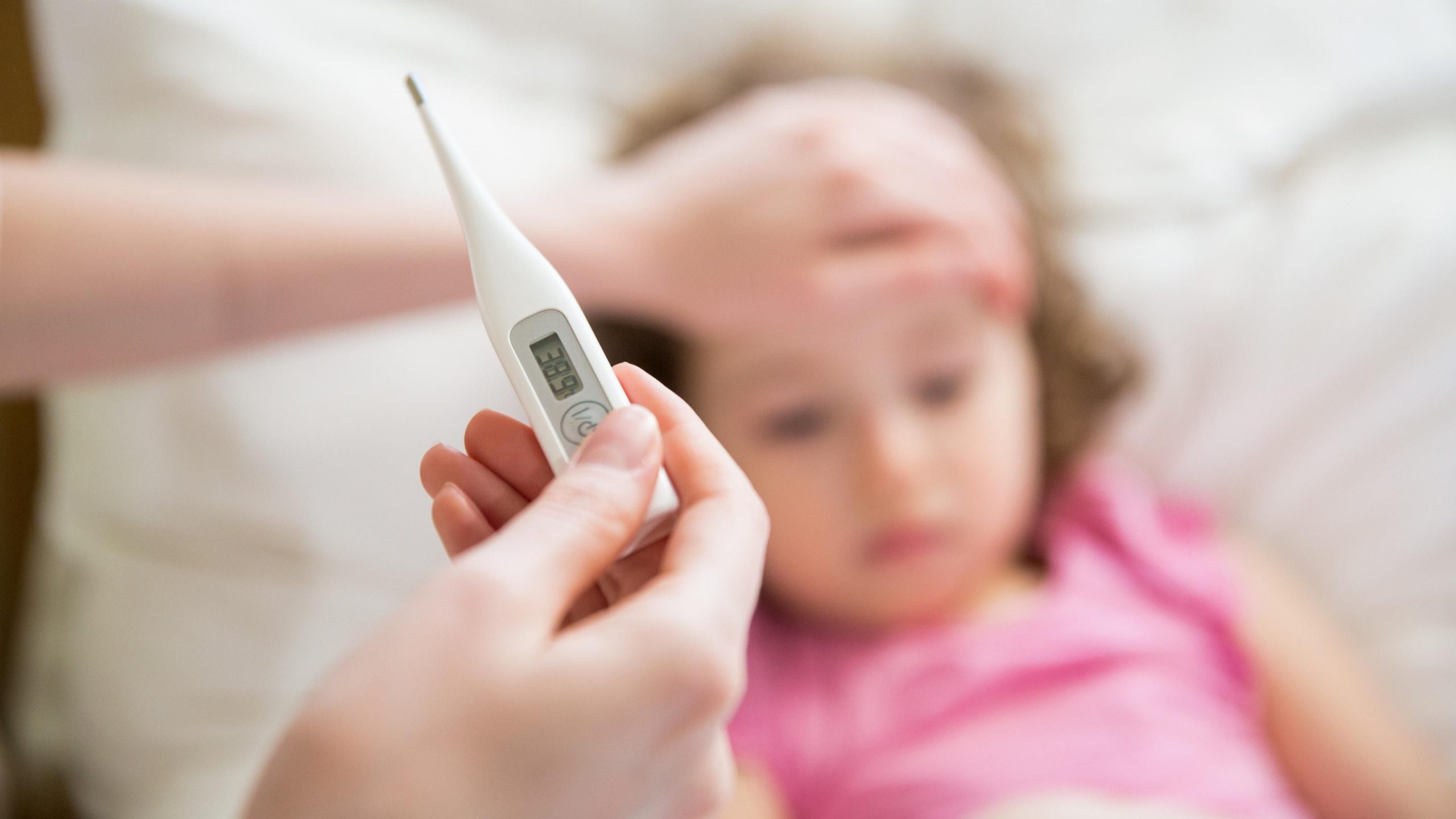
Fever Management in Special Populations
Certain groups of children may require special consideration when it comes to fever management:
Children with Chronic Health Conditions
Children with underlying health issues such as heart disease, lung disease, or weakened immune systems may be at higher risk for complications from fever. These children may require more aggressive management and closer monitoring.
Premature Infants
Premature babies may have difficulty regulating their body temperature and may be more susceptible to infections. They often require specialized care and monitoring when it comes to fever management.
Children with a History of Febrile Seizures
While febrile seizures are generally harmless, children who have experienced them in the past may be at higher risk for recurrence. Parents of these children should be particularly vigilant about fever management and may receive specific instructions from their healthcare provider.
Guidelines for Special Populations
- Consult with your child’s healthcare provider for personalized fever management plans
- Be aware of any specific temperature thresholds that require medical attention
- Understand any medication restrictions or special dosing instructions
- Monitor for signs of dehydration or other complications more closely
By understanding the unique needs of these special populations, parents and caregivers can ensure that fever is managed safely and effectively, minimizing the risk of complications and promoting a speedy recovery.
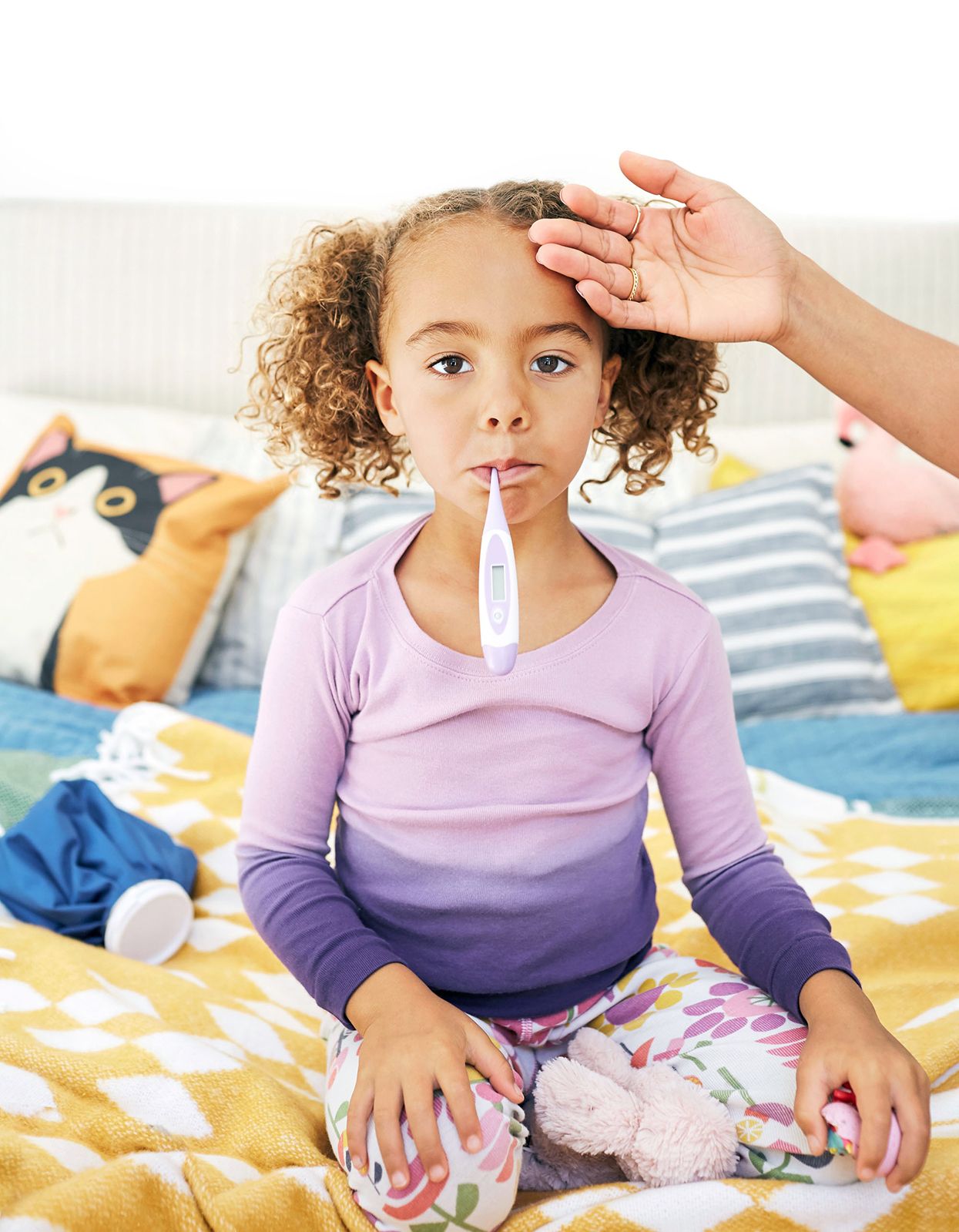
Fever in Children (High Temperature) | Causes and Treatment
A fever occurs when your child’s body temperature is higher than normal. Normal body temperature varies a little, but a temperature above 38°C is considered a fever.
Why does it happen?
Fever in young children usually means that they have an underlying infection. This understandably worries parents and carers.
- Most fevers in young children over 6 months of age are not serious.
- Fever in children aged 3-6 months has a higher chance of being serious. You should seek medical advice if the temperature is 39°C or more.
- Fever in a baby aged less than 3 months is unusual and worrying. You should seek medical advice if the temperature is 38°C or more.
When young children have a fever, if can be difficult for parents to work out why. In most cases, the fever is due to a non-serious viral infection. Many viral infections that affect young children cause a fever of up to 48 hours in duration before other symptoms develop. A small number of common viruses cause fevers that last longer than this.
A small number of common viruses cause fevers that last longer than this.
Fever treatment for children: a doctor’s advice
We are in the season of snotty noses, coughs and a seemingly endless period of infections in chi…
Why do children get fevers?
The most common causes of fever in children in the UK are viral infections. There are many other uncommon causes.
Our normal body temperature is around 37°C. Our temperature can go up and down a little, around this figure, during the day. Children’s temperatures can easily rise slightly with things like hot baths, exercise and wearing overly warm clothes. Teething often increases a toddler’s temperature by 0.5°C.
Fever is a part of the body’s natural defences against infection. Fever is created by your immune system under the direction of a part of the brain called the hypothalamus. The hypothalamus acts like a central heating thermostat. Fever happens when the hypothalamus sets the body temperature above its normal level.
It does this in response to an infection with germs, usually because it detects the presence of infectious agents like bacteria or viruses. It is believed that the increased temperature is a protection the body has developed to help fight the germs that cause infections, as they tend to multiply best at normal body temperature.
How does the body create a fever?
The mechanism through which the body increases its temperature is by reducing heat loss. We sweat less and feel dry to the touch, we shiver (the movement tends to increase temperature) and, because we feel as though we are cold, we curl up and seek different ways of warming up. The blood vessels in our skin shrink to preserve heat loss, so we look pale.
All of this is why, as the temperature is rising to meet the directions of the thermostat, we are hot to the touch but we feel that we are cold. During this stage of a fever your child will not be pleased when you try to cool them down, as they will already feel as though they are cold.
Eventually, the body’s temperature reaches the new ‘thermostat’ setting, and the feeling of being cold goes away. Eventually it reverses, the thermostat setting drops down again towards normal, and the body tries to lose the extra heat it has on board. It does this by sweating and by opening up the blood vessels in the skin so that we are flushed and sweaty.
Children tend to get higher fevers than adults – although this is only true after the age of 6 months. Before that age the immune system of a baby is quite immature. After the age of 6 months the actual temperature, in a fever, is not a good guide to whether or not your child is seriously unwell.
What can cause a fever/high temperature?
The most common causes of fever in children in the UK are viral infections. There are many other uncommon causes. Some of these will show other obvious signs:
- Infections with germs called viruses are the most common cause. Viral infections cause many common illnesses such as colds, coughs, flu, diarrhoea, etc.
 Sometimes viral infections cause more serious illnesses.
Sometimes viral infections cause more serious illnesses. - Infections with germs called bacteria are less common than viral infections but also cause fevers. Bacteria are more likely to cause serious illness such as pneumonia, joint infections (septic arthritis), urine infections, kidney infections, septicaemia and meningitis. However, bacteria can also cause fever in less serious infections such as ear infections and infected skin rashes.
- Inflammatory conditions and reactions may cause fever, including Kawasaki disease, some types of arthritis, and reactions to some medicines.
- Immunisations: sometimes children develop a fever after an immunisation. This is because immunisations are generally designed to ‘trick’ the body’s immune system into thinking it sees an infection, so that it develops immunity. Fevers following immunisation are not usually high or prolonged.
- Other types of infection: these include ‘tropical’ infections such as malaria and dengue, and conditions which are more common outside the UK, such as tuberculosis.

- Heat stroke is a possible cause of raised body temperature, although technically this isn’t a fever, as the body is being heated from the outside (whereas in fever the body does the heating itself).
Always inform your doctor if your child develops an unexplained fever within six months of visiting an area where malaria is present (endemic). This is the case even if your child has taken antimalarial medication.
How common is fever in children?
Fever and feverish illness are very common in young children, particularly in those aged less than 5 years, and it can be really worrying for parents. It’s not always easy to judge how sick your child is, or whether you should ask for medical help.
Three to four out of every 10 parents of children aged less than 5 years say their child has had a fever in the past year. It is probably the most common reason for a child to be taken to the doctor. Fever is also the second most common reason for a child being admitted to hospital and it can be a cause of great anxiety in parents. This leaflet offers guidance with:
This leaflet offers guidance with:
- Understanding how best to manage a fever.
- Knowing when to seek professional help or advice.
- Knowing what signs suggest that your child may be seriously unwell, including how to check for signs of lack of fluid in the body (dehydration) and other signs of serious illness.
Whether or not you decide to seek help or advice, you should always give a child with a temperature lots to drink. It is not always necessary to give them paracetamol or ibuprofen.
How should I measure my child’s temperature?
Forehead strip thermometers are not very accurate. Ideally you should use one of the following to measure your child’s temperature:
- Under 4 weeks old, with an electronic thermometer in the armpit.
- Between 4 weeks and 5 years old:
- With an electronic thermometer in the armpit.
- With a chemical dot thermometer in the armpit.
- With a digital thermometer designed to be placed in the ear.

What are the symptoms of fever?
The actual level of the temperature in fever is not a good guide to how severely ill a child is once they are older than 6 months.
The central symptom of a fever is a raised body temperature, measuring above 37.5°C. The recommendation is that this measurement should be taken under the arm in children less than 5 years old. This gives a reasonable guide to the body’s ‘core’ temperature.
Fever associated with common, self-limiting viral infections such as a cold typically rises and falls over a total of 12-48 hours. Children often complain of feeling cold at the start of a fever. They may look pale and feel shivery, yet will feel hot and dry to the touch. Later they often say they feel hot, and will be sweaty and flushed.
Headache and tummy ache are very common at the same time as fever. Children may be listless, tired and miserable and they may have watery eyes. They may have swollen glands in the neck, under the arms and in the tummy. Drooling may suggest that they have a sore throat, and they feel sick and may be off their food.
Drooling may suggest that they have a sore throat, and they feel sick and may be off their food.
What is a febrile convulsion?
Some children have a tendency to febrile convulsions. This is a type of seizure triggered by a rapid rise in body temperature. Some children have only one febrile convulsion, ever, but others go on to have them more often. See the separate leaflet called Febrile Seizure (Febrile Convulsion).
Febrile convulsions, and seizures due to infections such as meningitis, can look very similar. If a child has a seizure for the first time, it is important to rule out serious conditions such as meningitis before deciding it is a febrile convulsion.
When does a fever indicate serious illness?
All the symptoms associated with harmless viral fevers can also occur in more serious illness. It can be difficult to determine whether or not your child’s fever symptoms should worry you. You know your child better than anyone else. If your child has a fever with symptoms that are unlike those they have had with fevers in the past, consider the possibility of more serious illness.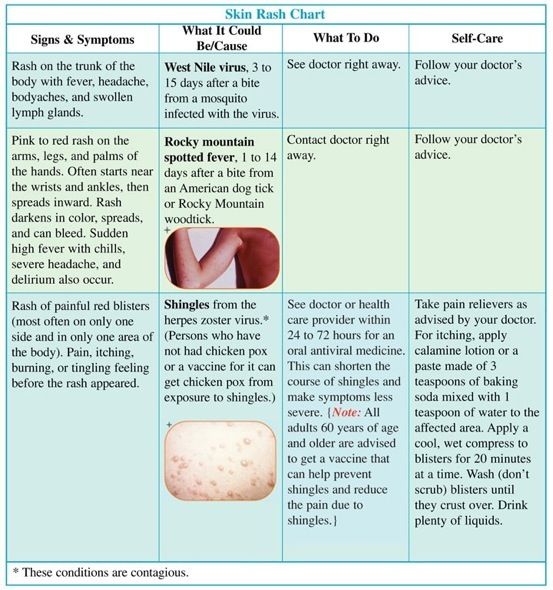
There are some features of a fever which will help you assess whether you need to seek medical advice:
Features of a fever that help reassure you that your child is not seriously unwell
These include that your child:
- Has normal-coloured skin, lips or tongue.
- Responds to you normally.
- Is basically content and will smile.
- Stays awake or awakens quickly and easily when you wake them.
- Has a strong normal cry, or is not crying.
- Has moist lips and tongue.
Features of a fever that suggest your child may be more unwell
- Your child is aged 3-6 months and has a temperature of over 39°C.
- Pale skin, lips or tongue.
- Not responding normally to you.
- Not smiling.
- Wakes only with prolonged effort by you.
- Not wanting to do anything; inactive.
- Dry mouth and lips.
- Poor feeding in babies.
- Reduced wet nappies in babies.
- Attacks of shivering.
- Has had a fever for five days or more.

- Has swelling of a limb or joint.
- Isn’t using an arm or leg or isn’t able to put any weight on one leg.
Features of a fever that suggest your child is seriously unwell
- Your child is less than 3 months of age and has a temperature of over 38°C.
- Pale/mottled/ashen/blue skin, lips or tongue.
- No response to you.
- Does not wake, or if you wake them, does not stay awake.
- Weak, high-pitched or continuous cry.
- Grunting noises when breathing.
- Indrawing of the muscles between the ribs when breathing (this is particularly true in babies).
- Reduced skin turgor (when you very gently pinch the skin on the back of the hand between your fingers, it does not bounce back but keeps the pinched shape).
- Bulging fontanelle (the ‘soft spot’ on the top of the head of babies up to about 18 months of age).
- Sunken fontanelle – suggests lack of fluid in the body (dehydration).
- A rash that doesn’t fade when you press a glass against it.

- Neck stiffness.
- Seizures.
- A bulging fontanelle (the soft spot on the top of a baby’s head).
Features that suggest your child is dehydrated
Some children who become irritable with a fever do not drink as much as they need, often because they feel sick (nauseated) and things taste strange. In particular, dehydration can develop quickly in a child who is being sick (vomiting) or has diarrhoea. Once dehydration sets in, nausea and vomiting can get worse, which can be a vicious cycle that is hard to break.
Signs of dehydration
These include:
- Dry mouth or tongue.
- No tears when crying.
- Sunken appearance to eyes.
- Drowsiness.
- Cool hands and feet.
- Generally becoming more unwell.
- Reduced skin elasticity, or turgor (when you very gently pinch the skin on the back of the hand between your fingers, it does not bounce back but keeps the pinched shape).
- Babies stop passing urine (although this can be difficult to detect if they also have diarrhoea), and the soft spot (on the top of the head) may become sunken in.
 Small babies can become dehydrated very quickly.
Small babies can become dehydrated very quickly.
Seek medical advice if you suspect that your child is becoming dehydrated.
What do meningitis and septicaemia look like?
Two of the most serious infections are meningitis and blood infection (septicaemia). These are uncommon; the vast majority of children with a fever do not have these infections.
The symptoms often develop quickly, over a few hours or so, or more slowly, over a few days. The symptoms may suggest a less serious illness at first, such as flu. But, even if you think it was flu to start with, if symptoms become worse and your child seems really sick you should seek urgent medical advice.
Meningitis and septicaemia are always medical emergencies, so it is essential to know what signs to look out for. See the separate leaflets called Meningitis symptoms checklist and Child Sepsis Safety Net for more details.
When should we go to the doctor?
The National Institute for Health and Care Excellence (NICE) has produced guidelines aimed to help healthcare professionals assess children with fever. These can also be useful to parents. They look at the symptoms seen in children with fever and allocate them to categories of ‘green’, ‘amber’ and ‘red’. They are shown in the table below.
These can also be useful to parents. They look at the symptoms seen in children with fever and allocate them to categories of ‘green’, ‘amber’ and ‘red’. They are shown in the table below.
Green symptoms are reassuring. They mean that your child’s symptoms suggest they are at low risk of serious illness.
Amber symptoms suggest that you need a doctor’s advice. They suggest that your child might be at slightly increased risk of more serious illness.
Red symptoms suggest that you need urgent medical advice. They suggest that your child’s symptoms could indicate a serious illness, needing emergency help.
Not all possible symptoms are included in the guidance – for instance, tummy (abdominal) pain is not mentioned and, unless it is mild, it usually does need assessing by a doctor.
Some of the guidance concerns the kind of symptoms which a trained healthcare professional is expected to assess but which you may feel uncomfortable trying to measure, such as number of breaths per minute (respiratory rate) and heart rate (which usually needs a stethoscope for accurate assessment in a small child).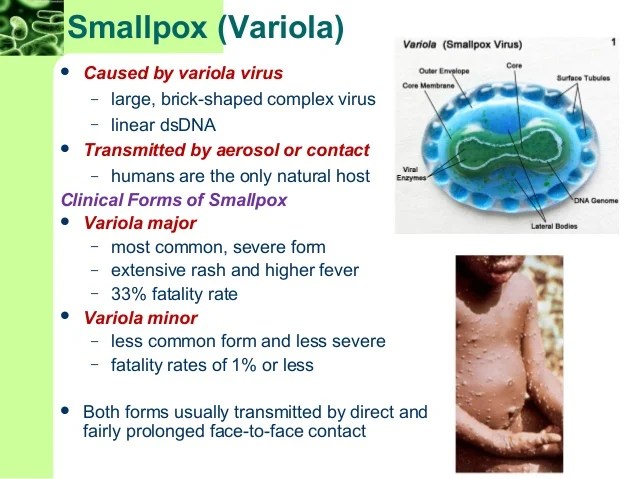 They are included here for completeness: if ANY red or amber signs are present you should seek help or advice; you do not need all of them to be present in order to do so.
They are included here for completeness: if ANY red or amber signs are present you should seek help or advice; you do not need all of them to be present in order to do so.
Green | Amber | Red High risk | |
| Colour | Normal colour | Pale | Very pale, mottled or blue. |
| Activity | Responds normally to you. | Not responding normally to you. | No response to you. |
Breathing | Increased breathing rate (>40 breaths per minute aged over 12 months, >50 breaths per minute aged 6-12 months). Flaring of the nostrils when they breathe. | Grunting. | |
| Circulation | Moist tongue and lips, normal eyes. | Dry tongue and lips. | Reduced skin elasticity. |
| Other | No red or amber signs. | Age 3-6 months, temperature ≥39°C. Fever for ≥5 days. | Age <3 months, temperature ≥38°C. Non-blanching rash. |
How do you diagnose the cause of a fever?
If your child has no ‘amber’ or ‘red’ warning signs, and they have other symptoms such as runny nose or sneezing suggesting a simple viral infection, their temperature will usually come down fairly quickly. In these cases, you can usually assume they have a simple cold.
If you telephone your GP or out of hours service, the healthcare professional will try to work out why your child has a fever. This will usually include asking about your child’s health and symptoms.
Your child may need to be examined (a ‘face-to-face’ consultation). In this case it is most likely that your child’s temperature, pulse and breathing will be checked. Your child will be checked for lack of fluid in the body (dehydration) and their blood pressure may be taken. A urine sample may be tested. Rarely, an ambulance may be called. This does not necessarily mean your child is very ill, only that they need to be assessed quickly in hospital.
A urine sample may be tested. Rarely, an ambulance may be called. This does not necessarily mean your child is very ill, only that they need to be assessed quickly in hospital.
It may be decided that you can carry on looking after your child at home; you may be given a number to contact if you need more advice or you may be asked to take the child for a check-up the next day.
What further tests are possible?
Often, the healthcare professional who assesses your child will decide that no further tests are necessary. This is usually because there are no worrying signs in your child’s condition and your doctor or nurse feels able to diagnose the infection, based on their training and experience.
Occasionally, however, they are uncertain.
- This may be because your child has some of the ‘amber’ or ‘red’ warning signs.
- It may be because a specific, worrying infection such as meningitis is in the community, and your doctor thinks that your child could be affected.

- It may be because your doctor or nurse feels unsure about the diagnosis and thinks that a second opinion and further tests are needed.
If this is the case you may be asked to go to the paediatric ward or Accident and Emergency department. If your child is very unwell an ambulance will be called. However, if that is not the case, and you are able, you may be asked to make your way there by car.
On the ward your child is likely to have several tests done. These will vary, depending on how your child appears and on what the doctors find when they assess and examine your child. They may include:
- Blood tests
- Urine tests
- Swabs
- Sputum samples
- X-rays
- Ultrasound scan
- Lumbar puncture
You may be discharged home from the hospital after this or, if doctors are still not certain that your child is at very low risk of a more serious condition, your child may be kept for observation or treatment.
What can I do if my child has a fever/high temperature?
You do not need to use paracetamol and ibuprofen if your child is comfortable and not distressed by the fever, aches or pains.
A child with a fever may look flushed and irritable and they may not feel like doing very much.
- Make your child comfortable – details below.
- Check for signs of lack of fluid in the body (dehydration).
- Check for signs of serious infection.
- Keep your child off school or nursery until they are better.
In most bouts of fever that are not caused by serious illness, the temperature generally comes down quickly. It is not unusual to see a child play happily after an hour or so, when their temperature has come down and they have had a good drink. It is reassuring if a child improves with the drop in temperature.
At any age, a child with a serious infection usually gets worse despite efforts to bring their temperature down. In addition, they may have other worrying symptoms. For example, breathing problems, drowsiness, convulsions, pains, or headaches which become worse. But – use your instincts. If you think a child is getting worse, get medical help, even if they don’t quite fit the ‘rules’ described here. Note: you should check on your child 2-3 times in the night if they have a fever, to make sure they are not developing a serious infection.
Note: you should check on your child 2-3 times in the night if they have a fever, to make sure they are not developing a serious infection.
How do I manage a fever?
The important things are to try to keep your child calm, reassured and comfortable.
- Give lots to drink. This helps to prevent a lack of fluid in the body (dehydration). You might find that a child is more willing to have a drink if they are not so irritable. So, if they are not keen to drink, it may help to give some paracetamol first. Then, try the child with drinks half an hour or so later. Fever caused by any illness may contribute to dehydration. This happens through evaporation of moisture from the skin as the body tries to cool itself, and through sweating.
- Cooling an over-warm room may be helpful.
- Tepid sponging is not recommended for treatment of fever. This is because the blood vessels under the skin become narrower (constrict) if the water is too cold.
 This reduces heat loss and can trap heat in deeper parts of the body. The child may then get worse. Many children also find cold-sponging uncomfortable.
This reduces heat loss and can trap heat in deeper parts of the body. The child may then get worse. Many children also find cold-sponging uncomfortable. - Cold fans are not recommended, for the same reasons, although cooling an over-warm room with adequate ventilation is sensible.
- Children with fever should not be underdressed or over-wrapped.
- Medicines like paracetamol and ibuprofen should not be used for fever unless your child appears distressed. If they are not distressed it is better to let the fever do its job and run its course:
- Using paracetamol and ibuprofen does not prevent febrile convulsions and should not be used for this purpose alone.
- You can use either paracetamol or ibuprofen in children with fever who appear distressed.
- You should not use both at the same time.
- Some studies have shown that ibuprofen may increase the risk of developing serious skin infections when used in chickenpox.
 Therefore, paracetamol is usually recommended in chickenpox and ibuprofen should not be used.
Therefore, paracetamol is usually recommended in chickenpox and ibuprofen should not be used. - Ibuprofen should not be used if your child is dehydrated because studies have shown that this can increase the risk of kidney failure.
When using paracetamol or ibuprofen in children with fever
- Continue for as long as the child appears distressed.
- Consider changing to the other medicine if the child’s distress is not relieved by the first.
- Only consider alternating these two medicines if the distress persists or comes back before the next dose is due.
- Do not give both at the same time.
You can buy paracetamol and ibuprofen in liquid form, or melt-in-the-mouth tablets, for children. The dose for each age is given with the medicine packet.
Remember: paracetamol and ibuprofen do not treat the cause of the fever – they merely help to ease discomfort. They also ease headaches and aches and pains. You do not need to use these medicines if your child is comfortable and not distressed by the fever, aches or pains.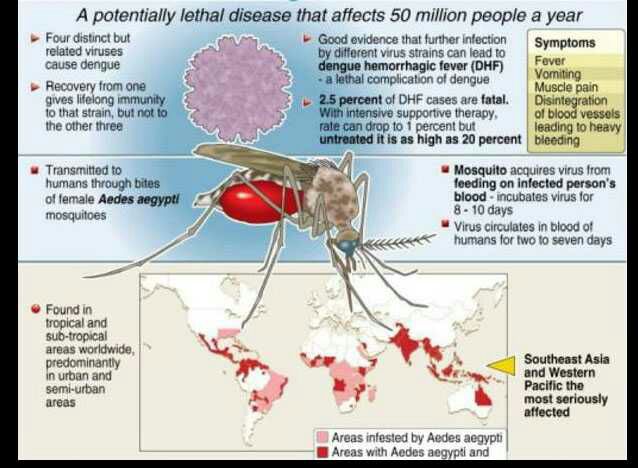
Do not use ibuprofen for:
- Children known to react (have hypersensitivity) to ibuprofen.
- Children in whom attacks of asthma have been triggered by ibuprofen or similar medicines.
- Children who have chickenpox.
- Children who are dehydrated.
Dr Mary Lowth is an author or the original author of this leaflet.
Goshen Health | Expert Emergency Care for High Fever in Children
Emergency Care
A normal body temperature for kids is 98.6 degrees Fahrenheit (F). A fever happens when your body temperature rises above this number. It’s your immune system’s response to viral and bacterial infections, such as meningitis, pneumonia or influenza, and other conditions such as heatstroke.
A high fever in children is a temperature above 104 degrees F. A high fever in babies is anything over 100.4 degrees F. If you’re not sure when to go to the emergency room, a good rule is to seek medical care if your child’s temperature is above these numbers.
Also seek medical care for a high fever in children in these situations:
- He or she just received vaccinations. A high fever may be a sign of a severe immunization reaction.
- Your child has a chronic medical condition.
- Your child has been outside of the country recently.
Our team at Goshen Hospital Emergency Department is equipped to treat high fever in children in Goshen, IN. With experienced physicians and nurses, leading-edge technologies and a compassionate environment, we provide advanced care that prioritizes the well-being of your family.
Symptoms related to a high fever in kids
Along with a high fever, children may also experience chills, sweats, body aches, weakness, fatigue and loss of appetite.
Seek medical care right away for these signs and symptoms:
- Confusion, disorientation or hallucinations
- Symptoms of dehydration, including decreased tear or urine production
- Purplish-red, dotted rash
- Rapid pulse or heart rate
- Severe headache, severe sore throat, stiff neck or abdominal pain
- Seizures
- Shortness of breath
- Unusual drowsiness, lethargy, fussiness or high-pitched crying
Treating high temperature in children
At our emergency room, we diagnose what’s causing the high fever and provide the appropriate treatment. If the condition is severe, we may transfer him or her to a qualified children’s hospital. We have well-established relationships with nearby facilities and can ensure a smooth transition.
If the condition is severe, we may transfer him or her to a qualified children’s hospital. We have well-established relationships with nearby facilities and can ensure a smooth transition.
At home, you can help your child feel better with these tips:
- Give him or her children’s versions of acetaminophen or ibuprofen to bring down the fever. Ask your doctor which one is better for your child. Don’t give your children aspirin due to the risk of Reye’s syndrome, a life-threatening medical disorder.
- Apply cold compresses or have your child take a lukewarm bath that’s slightly cooler than his or her body temperature. Avoid cold baths, which could trigger shivering, and alcohol and other rubs, as they absorb through your child’s skin.
- Give your child plenty of fluids to prevent dehydration.
- Use layers of clothing or covers for easy adjustment when your child is chilled or breaks into sweats.

Goshen Hospital Emergency Department serves Elkhart County by treating high fever in kids in Goshen, IN.
CAUSES AND DIAGNOSIS OF TEMPERATURE IN A CHILD – IPM Clinic for Children in Krasnoyarsk
Subfebrile temperature is a rise in body temperature from 37.0 to 37.9 degrees Celsius. Anything above these indicators is a febrile temperature. The average body temperature is, as a rule, 36.6 degrees, but for someone the temperature may be below this indicator, and for someone the temperature of 37.0-37.2 is quite normal. But in most cases, of course, this condition indicates a sluggish inflammatory process in the body, so the reasons must be dealt with.
To begin with, it is worth noting that a subfebrile temperature in an infant without other signs of the disease is the norm, due to the still unsteady thermoregulation system!
Factors influencing the change in the thermoregulation system:
— diurnal fluctuations (at night and in the morning, as a rule, the body temperature is minimal, in the evening — maximum)
— child’s age (the younger the child, the more metabolism)
– weather conditions (temperature is higher in summer in hot weather)
– physical activity (increases body temperature)
– emotional disorders (screaming, crying, stress – all this can also affect the child’s temperature)
Therefore, correct measurement temperature is an important indicator!
Before taking a child’s temperature:
- Reassure the child.
 If he just ran and jumped, wait at least half an hour before taking a thermometry
If he just ran and jumped, wait at least half an hour before taking a thermometry - Check the thermometer (you can measure the temperature with both automatic and mercury thermometers)
- Check the armpit (In no case should it be wet. Wipe dry with a paper towel before examination)
- Measure the body temperature daily at a certain time
As already mentioned, the most common cause of low-grade fever is a latent-current infection.
Latent infection is a form of infectious process observed mainly in protracted or chronic processes, characterized by long-term persistence of the pathogen in the body without clinical signs of disease.
Observed with a decrease in immunity. The causative agent is sometimes not determined in the blood, tissues and secretions.
Subfebrile condition can be like a “temperature tail” after an acute respiratory viral infection and persist for up to several months, or as a protracted course or transition to a chronic form. In children
In children
Foci of infection that most often cause prolonged low-grade fever:
— ENT pathology — adenoids, tonsillitis, sinusitis, otitis media, pharyngitis, and others
— inflammatory diseases of the gastrointestinal tract — gastritis, pancreatitis, cholecystitis, etc.
— Inflammation of the urinary tract — pyelonephritis, urethritis, cystitis, etc.
— Dental caries
— Allergy
Do not forget that prolonged fever can also occur with such diseases:
- viral hepatitis
- HIV- infection
- tuberculosis
- tumors
- thyroid disease
- anemia
- colitis and others
Certain tests are required to find out the causes:
– complete blood count
– general urinalysis
– feces for worm eggs
After that, consult with narrow specialists:
– ENT doctor (!)
– surgeon
— gastroenterologist
– dentist
– if necessary, with a neurologist and psychologist
abdominal cavity
— Chest x-ray
— Sinus x-ray
— Sowing on the flora from the pharynx and nose
The most important thing in finding out the causes of subfebrile condition is a comprehensive examination and consultations of specialists. It is worth being patient, because the reasons can be very diverse.
It is worth being patient, because the reasons can be very diverse.
You should not immediately resort to antibiotics, because “they cure everything”, and children’s immunity is a fragile condition that affects later adult life.
It is also the task of parents to create the right diet and sleep for the child. Do not forget about the emotional state of the baby.
Be healthy!
Still have questions? Book an appointment with a pediatrician!
Appointment phone number (391) 200-50-03.
Causes of fever in children
An increase in body temperature in a child is always an alarming symptom for parents.
In this report, we will only talk about fever (subfebrile – from 37.2 to 38°C, febrile – from 38 to 40°C and more than 40°C – hypothermic). According to the duration of the increase in body temperature, ephemeral fever is distinguished – up to 3 days, acute – which lasts up to 15 days, subacute – with a duration of up to 45 days and chronic – over 45 days.
1. Subfebrile temperature – from 37 to 38 ° C;
2. Febrile temperature – from 38 to 39 ° C;
3. Pyretic temperature – from 39 to 41 ° C;
4. Hyperpyretic temperature – above 41 ° C.
Body temperature must be measured at rest, in the armpit, with a mercury thermometer and within 5 minutes. Now there is a large assortment of electronic thermometers. They are easy to use, but require regular adjustments, because. sometimes have a fairly large error in one direction or another.
The cause of the increase in body temperature is usually determined within 1-2 days. Most often this is an acute disease. This may be an acute respiratory infection in the form of nasopharyngitis, bronchitis, pneumonia, sinusitis, or an intestinal infection in the form of infectious gastroenterocolitis caused by bacterial or viral pathogens, or, in children of the first year of life, teething and overheating of the baby may be the cause of an increase in body temperature. Sometimes an additional examination is required to determine the fever. So a urinary tract infection can only manifest itself as an increase in body temperature without any additional symptoms – urination disorders, swelling and changes in the color of urine. And this diagnosis can be determined after a urine test. In young children, otitis can occur without pain, which is so pronounced in older children, and this diagnosis can be determined by an ENT doctor after examining the middle ear.
Sometimes an additional examination is required to determine the fever. So a urinary tract infection can only manifest itself as an increase in body temperature without any additional symptoms – urination disorders, swelling and changes in the color of urine. And this diagnosis can be determined after a urine test. In young children, otitis can occur without pain, which is so pronounced in older children, and this diagnosis can be determined by an ENT doctor after examining the middle ear.
Sometimes some “serious” diseases may initially manifest themselves only with an increase in body temperature. These include malignant neoplasms (acute leukemia, lymphomas, neuroblastomas, histiocytosis), autoimmune diseases (juvenile rheumatoid arthritis, autoimmune thyroiditis, systemic lupus erythematosus, autoimmune hepatitis, carditis), infectious diseases (yersiniosis, tuberculosis, herpes virus infection), endocrine pathology (hyperthyroidism) and many more diseases.
All these diseases manifest themselves as a symptom of an increase in body temperature due to the fact that its cause is the release of inflammatory factors that affect the mechanism of thermoregulation. However, quite often, children who have an increase in body temperature are not associated with any disease go to the doctor. This condition is defined as a fever of unknown etiology. Most often, this is a subfebrile increase in body temperature, which fluctuates during the day, normalizes on its own and rarely causes any sensations in the patient. Children are active, their appetite and sleep are not disturbed. Sometimes teenagers may complain of increased fatigue, headache, feeling chills or fever.
However, quite often, children who have an increase in body temperature are not associated with any disease go to the doctor. This condition is defined as a fever of unknown etiology. Most often, this is a subfebrile increase in body temperature, which fluctuates during the day, normalizes on its own and rarely causes any sensations in the patient. Children are active, their appetite and sleep are not disturbed. Sometimes teenagers may complain of increased fatigue, headache, feeling chills or fever.
Such conditions are the result of violations of thermoregulation. The thermoregulation center is located in the medulla oblongata and its dysfunction (“malfunction”) occurs after an acute illness accompanied by hyperthermia, as a “temperature plume” or as a result of psycho-emotional stress or hormonal activity in adolescence. These autonomic disorders are not accompanied by any changes in blood and urine tests, examinations for infections do not give a positive result.
Special attention should be paid to hyperthermic conditions in adolescents.

 Sometimes viral infections cause more serious illnesses.
Sometimes viral infections cause more serious illnesses.



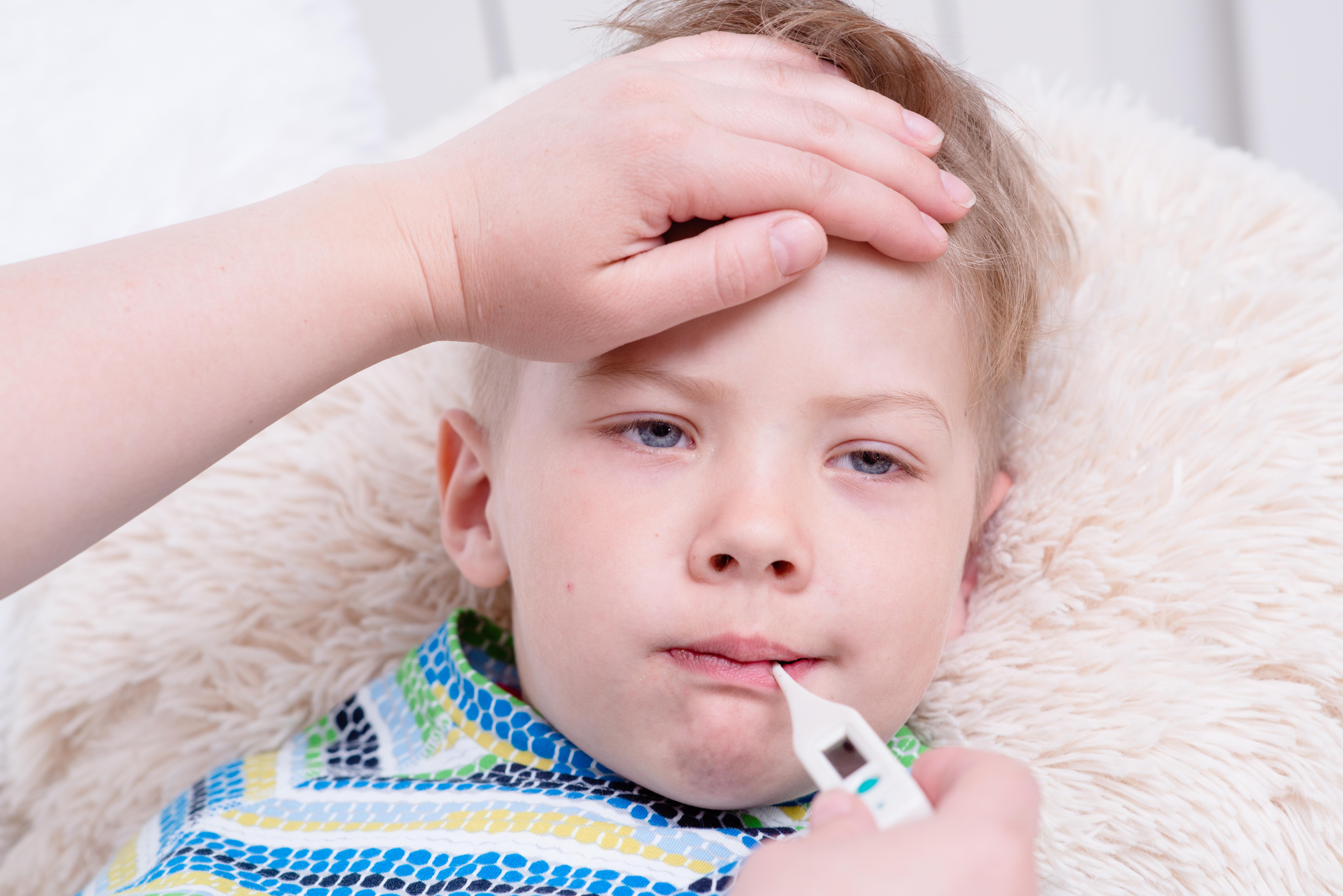 Small babies can become dehydrated very quickly.
Small babies can become dehydrated very quickly.


 This reduces heat loss and can trap heat in deeper parts of the body. The child may then get worse. Many children also find cold-sponging uncomfortable.
This reduces heat loss and can trap heat in deeper parts of the body. The child may then get worse. Many children also find cold-sponging uncomfortable.:max_bytes(150000):strip_icc()/scarlet-fever-overview-1958805_fin-b03dd028ce63461c8bbdecef8eff4ff5.png) Therefore, paracetamol is usually recommended in chickenpox and ibuprofen should not be used.
Therefore, paracetamol is usually recommended in chickenpox and ibuprofen should not be used.